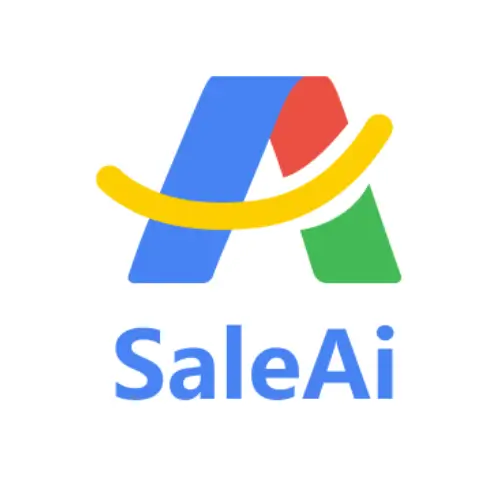Introduction
Sales forecasting has always been a critical part of business strategy. Accurate forecasts empower companies to allocate resources effectively, plan for growth, and mitigate risks. However, traditional forecasting methods often rely on static historical data, manual calculations, and subjective judgment—leading to inaccuracies and missed opportunities.
EnterAI-powered sales forecasting, a game-changer that leverages machine learning and real-time data to deliver highly accurate predictions. In this article, we’ll explore how AI is revolutionizing sales forecasting, its key benefits, and why it’s becoming indispensable for modern businesses.
How AI Transforms Sales Forecasting
a. Real-Time Data Integration
Traditional forecasting methods often lag behind because they rely on outdated or incomplete data. AI changes the game by integrating real-time data from multiple sources, including CRM systems, social media, and customer interactions.
-
What AI Does:
- Continuously updates forecasts based on live data.
- Identifies patterns from diverse data points, such as customer behavior, market trends, and competitor activity.
-
Why It Matters:
Real-time insights allow businesses to respond quickly to market changes and make proactive decisions.
b. Advanced Predictive Models
AI uses machine learning algorithms to analyze historical data and identify patterns that humans might miss. These predictive models are far more sophisticated than traditional statistical methods.
-
How It Works:
- AI identifies key factors influencing sales, such as seasonality, pricing changes, and economic conditions.
- It learns from past forecasting errors to improve accuracy over time.
-
The Result:
Businesses gain highly reliable forecasts that help them plan with confidence.
c. Scenario Planning and Risk Mitigation
AI doesn’t just provide a single forecast—it can simulate multiple scenarios to help businesses prepare for different outcomes.
-
What AI Does:
- Generates “what-if” scenarios based on various inputs (e.g., changes in demand, supply chain disruptions).
- Highlights potential risks and recommends mitigation strategies.
-
Why It Matters:
Companies can better prepare for uncertainties and minimize potential losses.
d. Enhanced Collaboration Across Teams
AI-powered forecasting tools often come with intuitive dashboards and visualizations that make data accessible to everyone, not just data analysts.
-
Key Features:
- Interactive dashboards that display forecasts in easy-to-understand formats.
- Automated reports shared across sales, marketing, and finance teams.
-
The Benefit:
Improved cross-department collaboration ensures everyone is aligned on goals and strategies.
Key Benefits of AI in Sales Forecasting
a. Increased Forecast Accuracy
AI eliminates human biases and errors, providing forecasts that are up to 50% more accurate than traditional methods.
b. Faster Decision-Making
With real-time updates and automated insights, decision-makers can act quickly, whether it’s adjusting inventory levels or reallocating resources.
c. Cost Savings
By accurately predicting demand, companies can reduce waste, optimize staffing, and avoid overproduction or stockouts.
d. Competitive Advantage
AI-powered forecasting gives businesses a strategic edge by enabling them to anticipate market changes before their competitors.
Real-World Applications of AI in Sales Forecasting
Case Study 1: Retail Industry
A global retail chain implemented AI-powered forecasting to predict seasonal demand. By analyzing historical sales data and current market trends, the AI system recommended optimal inventory levels for each store. The result? A 20% reduction in excess inventory and a 15% increase in sales during peak seasons.
Case Study 2: SaaS Company
A SaaS company used AI to forecast subscription renewals and upsell opportunities. The AI model identified customers at risk of churn and suggested personalized retention strategies. This led to a 25% improvement in customer retention rates and higher recurring revenue.
Case Study 3: Manufacturing Sector
A manufacturing firm adopted AI to forecast production needs based on fluctuating demand and raw material availability. The AI system’s accurate predictions helped the company streamline production schedules, reducing costs by 18%.
Challenges and How to Overcome Them
a. Data Quality Issues
AI models are only as good as the data they’re trained on. Incomplete or inaccurate data can lead to flawed forecasts.
- Solution:Regularly clean and update data sources to ensure accuracy.
b. Resistance to Change
Some teams may be hesitant to adopt AI due to unfamiliarity or fear of job displacement.
- Solution:Provide training and emphasize that AI is a tool to enhance, not replace, human expertise.
c. Initial Investment Costs
Implementing AI systems can be expensive upfront.
- Solution:Focus on long-term ROI and start with scalable solutions tailored to your business needs.
The Future of AI in Sales Forecasting
-
Integration with IoT and Big Data:
AI will leverage data from IoT devices and big data sources to provide even more granular forecasts. -
Self-Learning Models:
Future AI systems will continuously refine their algorithms without human intervention, becoming smarter and more accurate over time. -
Industry-Specific Solutions:
AI tools will become increasingly tailored to the unique needs of different industries, from healthcare to e-commerce.
Conclusion
AI in sales forecasting is not just a trend—it’s a necessity for businesses aiming to thrive in today’s fast-paced, data-driven world. By delivering accurate, real-time predictions and actionable insights, AI empowers companies to make smarter decisions, optimize operations, and achieve predictable revenue growth.
The question is no longer whether to adopt AI in sales forecasting, but how soon you can start. The future of sales is here—are you ready to embrace it?



